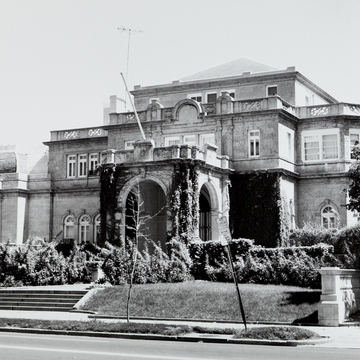The Spanish Embassy, built by Mrs. John B. Henderson as part of her speculative development of Meridian Hill, was first offered as a gift to the American government to serve as the vice president's residence. It was vacant for three years before the Spanish government purchased it in 1926. When the federal government declined Mrs. Henderson's gift, she offered it to the Mexican government, presumably on the basis of the building's historical precedents, which perhaps influenced officials of the Spanish government in their choice. The new owners extensively remodeled the existing building and hired Jules Henri de Sibour in 1926 to design the chancery at the back of the property facing 15th Street. Both structures have been renovated numerous times in the intervening years, mainly in the interiors.
The composition of Totten's building is asymmetrical with a central, stepped cube forming the main block, an octagonal bay (originally with an open porch above) projecting to the south, and two separately articulated pieces on the north. The main drawing room is behind the four grouped arched windows; the ballroom is identified by the mansard roof and large thermal window opening. The whole is raised and set behind low balustrades that provide terraces for each section of the building. The structure is of stuccoed brick, and the exterior decoration is classical in derivation with suggestions of Spanish Renaissance architecture in the














